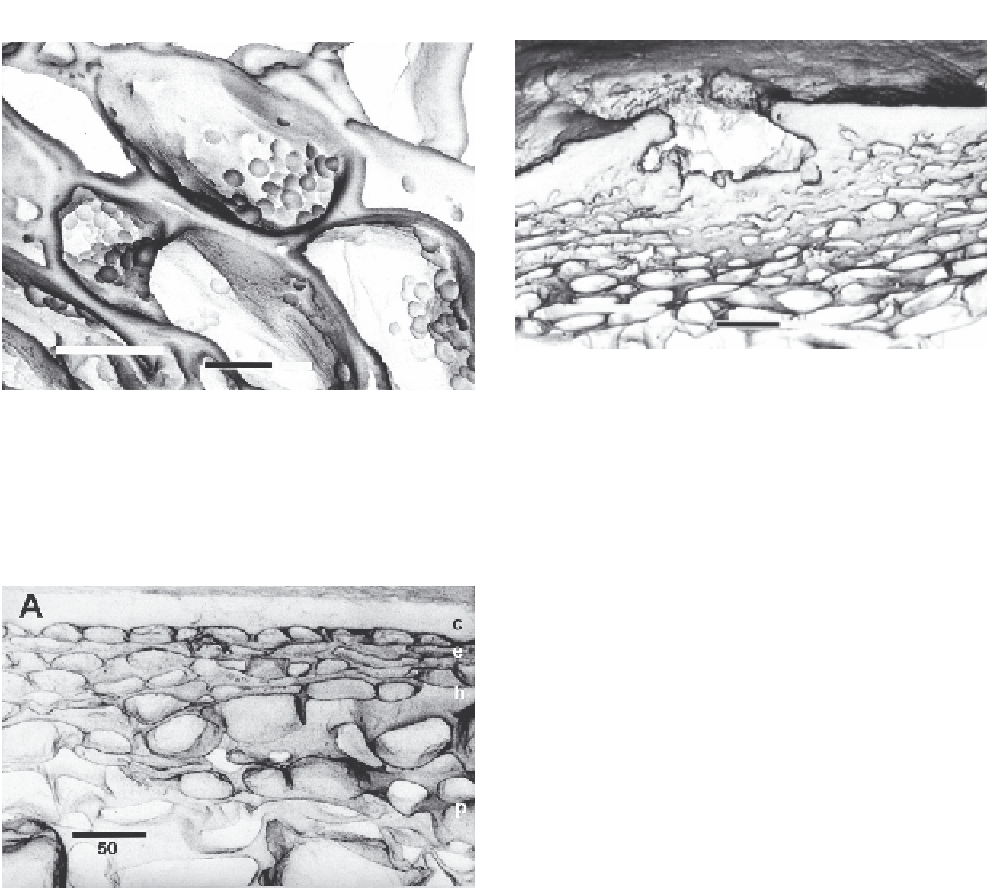Agriculture Reference
In-Depth Information
Figure 5.4
Transverse section of a wax
encrusted
lenticle in the skin of 'Crofton'. The white scale bar
represents 50
=
Figure 5.2
Rounded starch grains in fleshy
parenchyma cells of new season 'Granny Smith'
apples. An intercellular airspace can be observed at
the top left-hand corner. The white scale bar
represents 20
μ
m.
This handling system has significantly reduced handling
and bruising injuries in the packinghouse.
μ
m.
Skin
The skin of the apple fruit is composed of the epidermis
and the hypodermis, is usually 4-7 cells deep and contains
chloroplasts and anthocyanins (Figure 5.3). The skin is an
important cosmetic feature of apples and even though these
cells have thick cell walls with thickened corners, they are
susceptible to compression and impact damage leading
to fruit bruising.
Lenticels
Stomata and trichomes are present on young immature
fruit, but are replaced by lenticels in mature fruit (Roth
1977). The walls of the guard cells of the old stomata
become thickened and the substomatal cavities are blocked
by suberisation of the cells (Figure 5.4). Although lenticels
are functionally closed by the formation of a cuticle or
suberisation of the sub-epidermal cells (Roth 1977), they
are sites of many postharvest disorders such as lenticel
breakdown, particularly in 'Gala' and 'Fuji' apples.
Figure 5.3
Transverse section of 'Granny Smith'
peel. The white scale bar unit is 50
μ
m. c, cuticle;
e, epidermis; h, hypodermis; p, parenchyma.
Flesh
In mature fleshly cells, these parenchyma cells have
very thin walls with large intercellular spaces. These large
intercellular spaces vary greatly in size and are up to
2000
Cuticle
The cuticle is an external, noncellular membrane and
is thought to consist of various layers containing cutin,
wax and cellulose. A pectic layer lies immediately below
the cuticular membrane and is immediately above the
epidermis (Esau 1977). The cuticle protects the fruit from
external pathogens and also significantly reduces water
loss from the fruit. However, in some varieties such as
'Granny Smith', generation of excess wax during storage
m in diameter (Reeve
1953) (Figure 5.2). The mean volume of intercellular
spaces is between 22% and 40% and does not appear to
be related to cell size (Reeve 1953). This high level of
intercellular spaces in mature apple fruit allows apples to
float in water that enables water transfer and handling.
μ
m in length and 100-200
μ


































